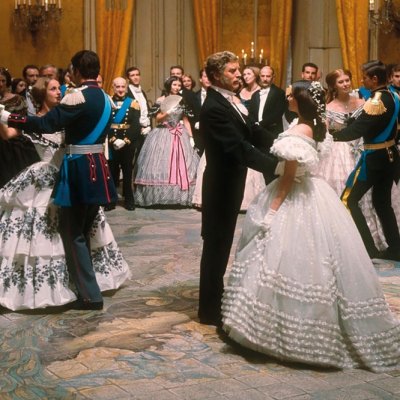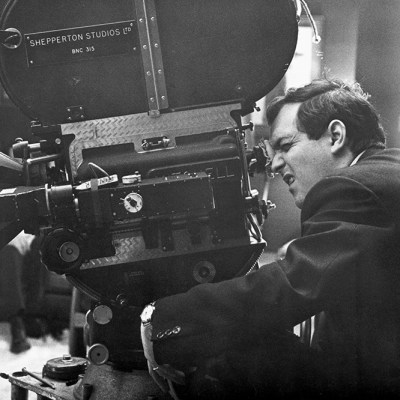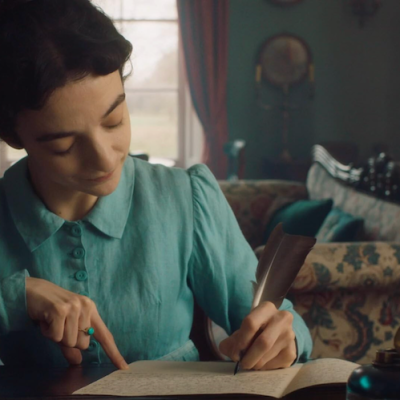An 18th-century gallerist is showing an aristocratic client a painting that hangs in a stately home. ‘This is by Lodovico Cardi, a disciple of Alessandro Allori,’ he announces, standing in front of a Robert Adam fireplace. ‘It’s dated 1605 and shows the Adoration of the Magi.’ After an exchange of banalities (‘I love the use of the colour blue by the artist’), the client, it’s implied, buys the painting at an exorbitant price.
This confirms what we already know: that the client isn’t really an aristocrat, and is out of his depth. He is the titular hero of Stanley Kubrick’s Barry Lyndon (1975), which has marched back into UK cinemas to mark its 50th anniversary. A rakish opportunist of humble Irish origins, Barry, played by Ryan O’Neal, strives, and fails, to become a lifetime member of the English squirearchy. Many viewers might register ‘Lodovico Cardi’ – who is not mentioned in William Makepeace Thackeray’s The Luck of Barry Lyndon (1844), on which the film is based – as a nod to Kubrick’s previous movie, A Clockwork Orange (1971), in which the protagonist is subjected to a brainwashing procedure known as the Ludovico Technique. But Cardi was a real Florentine artist, better known as Cigoli (1559–1613), and while Barry’s purchase may have been perfectly tasteful, it was not an especially smart bet in art-market terms. Cigoli has never fetched more than $156,000 at auction.
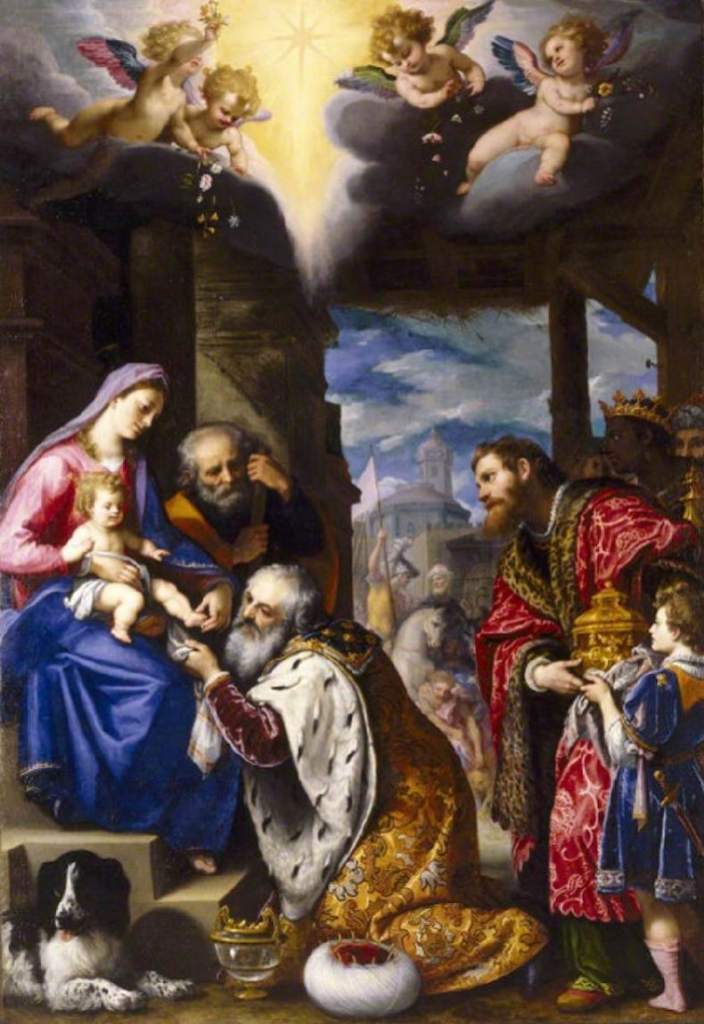
By his own meticulous standards, Kubrick was taking some liberties with art history here. Adoration enters Barry’s home, presumed to be Stourhead in Wiltshire, sometime in the mid 1780s; in reality it did not enter Stourhead until 1790, when Richard Colt Hoare made it the centrepiece of his collection. But the film is suffused with Kubrick’s reverence for 18th-century landscape painting and portraiture, particularly – but not exclusively – from Britain. The director compiled scrapbooks full of reproductions of paintings from the period, which provided more than just inspiration: once or twice, Kubrick duplicates their composition exactly. Take his shot of a handsome sorrel, which is scarcely different to George Stubbs’s Tristram Shandy (c. 1760):
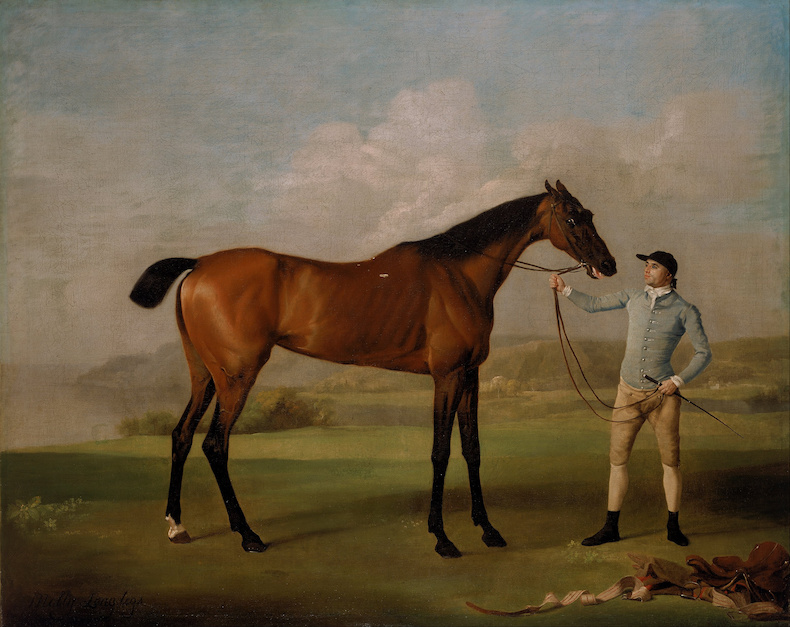
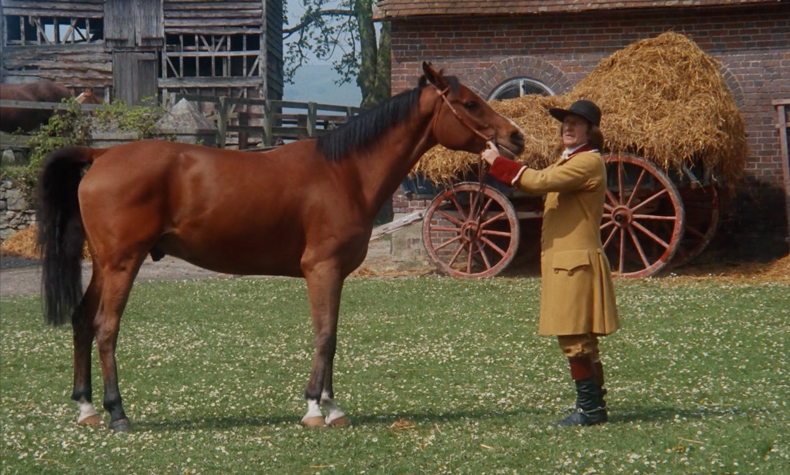
This may double as a sly bit of commentary. Tristram Shandy – like Molly Longlegs, pictured above – was likely commissioned by the 2nd Viscount Bolingbroke, known for his love of gambling, drinking and womanising: vices in which Barry revels, and which eventually play a role in his undoing. Bolingbroke, like Barry, racked up ruinous debts, and was forced to sell off property that had long been in the family.
If this is an intentional resonance on Kubrick’s part, it’s a subtle one. The film-maker’s visual sarcasm is more obvious in the two tableaux he lifts from William Hogarth, namely the Orgy panel from A Rake’s Progress (1732–34)…
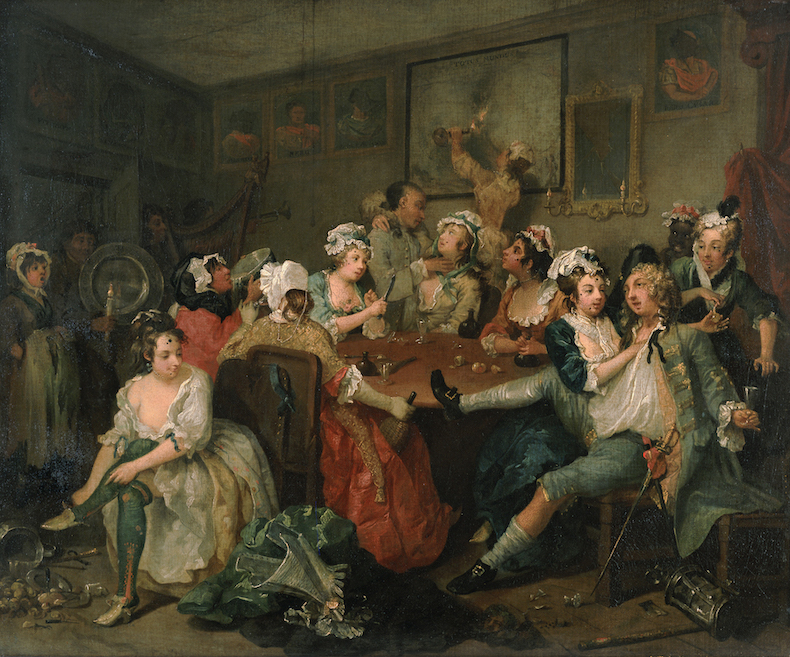
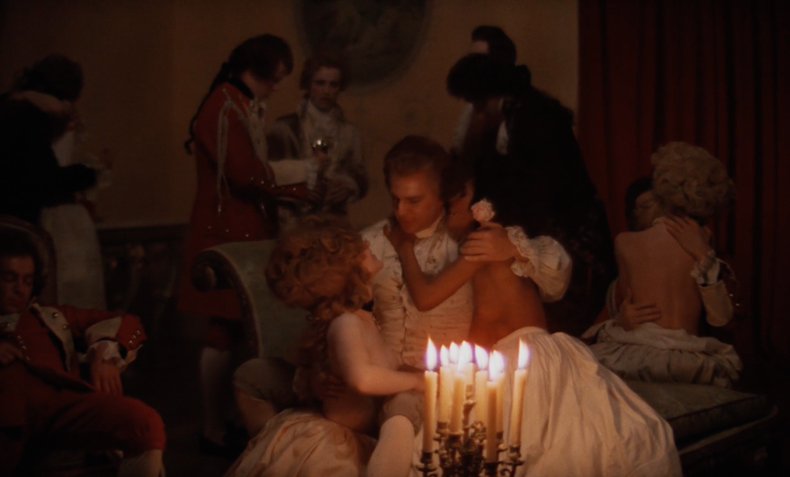
… and The Tête à Tête, from Marriage à-la-Mode (1743–45), about a marriage – like Barry’s – made purely for social mobility.

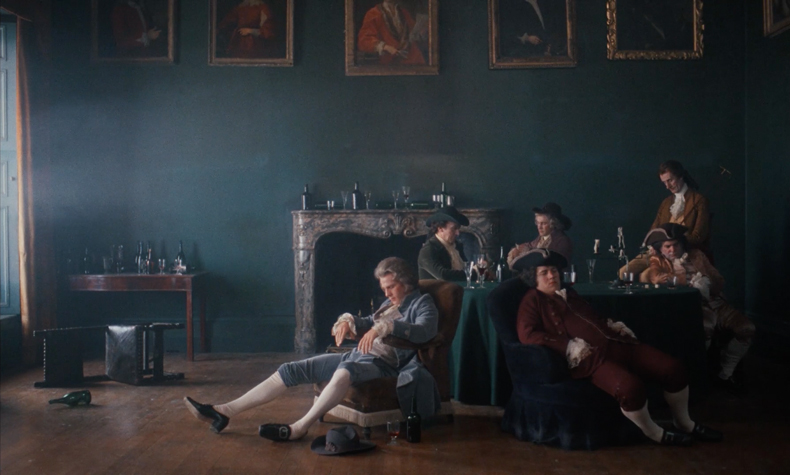
The latter is a particularly clear homage – note the upturned chair and the paintings as well as the distinctive positioning of the rake’s legs. Though it situates the film in a centuries-old English tradition of visual satire and moralising, Kubrick, given cinema’s greater potential for irony, gets to have his cake and eat it: as mordantly funny as the film is, it is also a tragedy, with Barry doomed from the start. The casting of O’Neal, with his unconvincing Irish accent, makes Barry seem as out of place in the Irish village from which he sets out as he is among the great and the good – he can never truly be at home, no matter the milieu – and the actor’s plaintive blue eyes are able to elicit more sympathy than any of Hogarth’s cads.
If Kubrick invokes Hogarth in the service of cynicism, the way he uses setting and landscape is no less cutting – at least, on the surface. He frequently uses long zoom-outs to make his characters seem dwarfed by their surroundings, suggesting the transience of Barry’s actions, and the pettiness of his woes, against a seemingly timeless backdrop. His shot of the Lyndons’ seat, using Castle Howard, mirrors Constable’s painting of Malvern Hall in Warwickshire (1821):
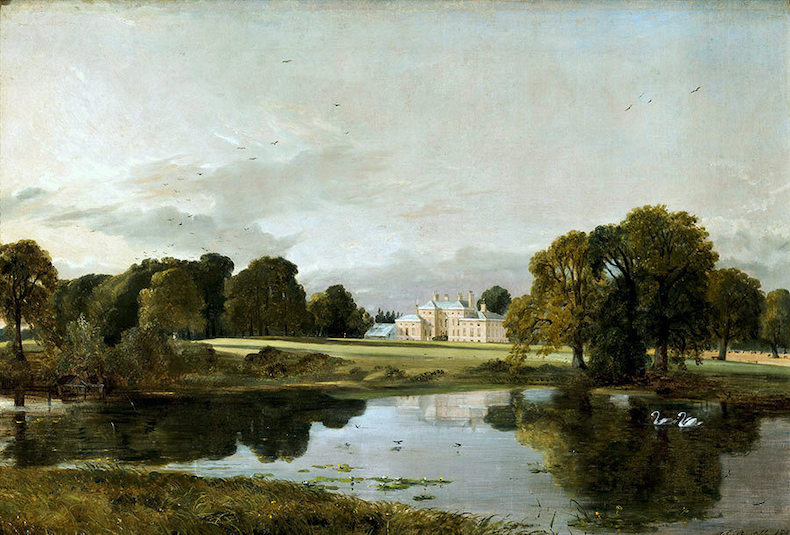
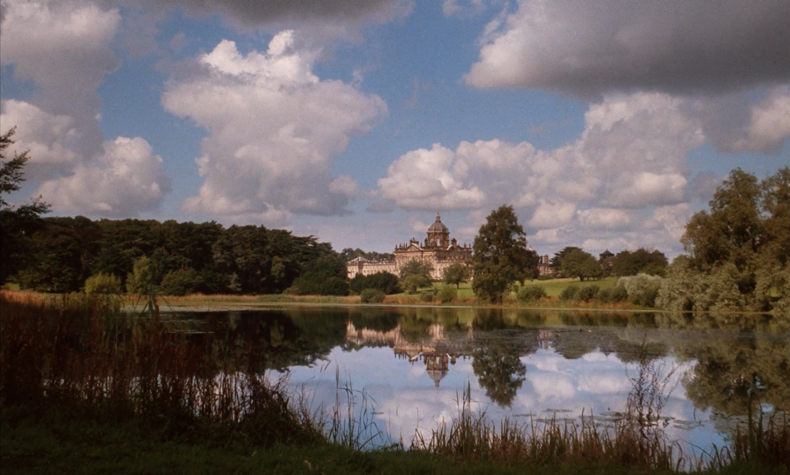
But Constable was romanticising an environment that was being rapidly transformed by the ructions of the Industrial Revolution; his placid landscapes were an attempt to memorialise, if not wish into being, an eternal order governed more by seasons than by fiscal quarters. It’s hard to tell whether Kubrick, by drawing inspiration from Constable, was being too cynical or not cynical enough – fixing a sharp eye on the triviality of human affairs while ignoring the fact that the landscapes he so lovingly renders are not as timeless, or as immune from human activity, as they seem.
This isn’t to say that Kubrick doesn’t feel deeply for his characters. To give us a sense of the demons Lady Lyndon (Marisa Berenson) is facing as she attempts suicide late in the film, the film-maker not only switches to hand-held camera – a technique he uses sparingly and effectively whenever he wants to remind us that something very real is at stake – but also summons the spirit of Henry Fuseli’s The Nightmare (1781):
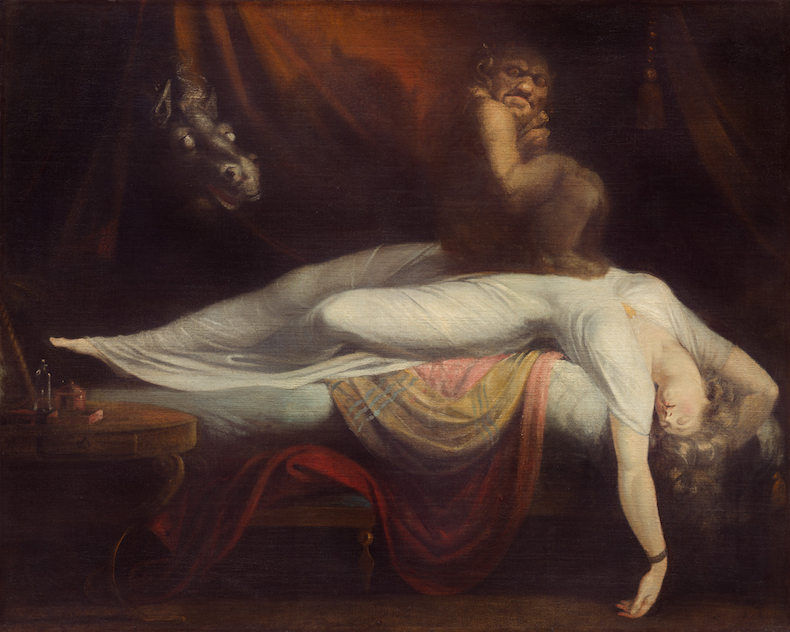
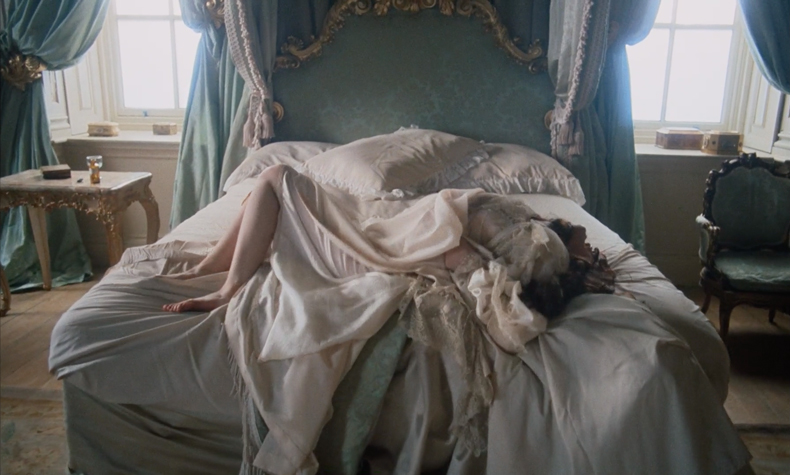
The event that seems to tip her into despair seems to be Barry’s mother’s dismissal of Lady Lyndon’s chaplain, Reverend Runt (Murray Melvin) – who, it must be said, bears a slight resemblance to Thomas Gainsborough’s self-portrait of 1759:
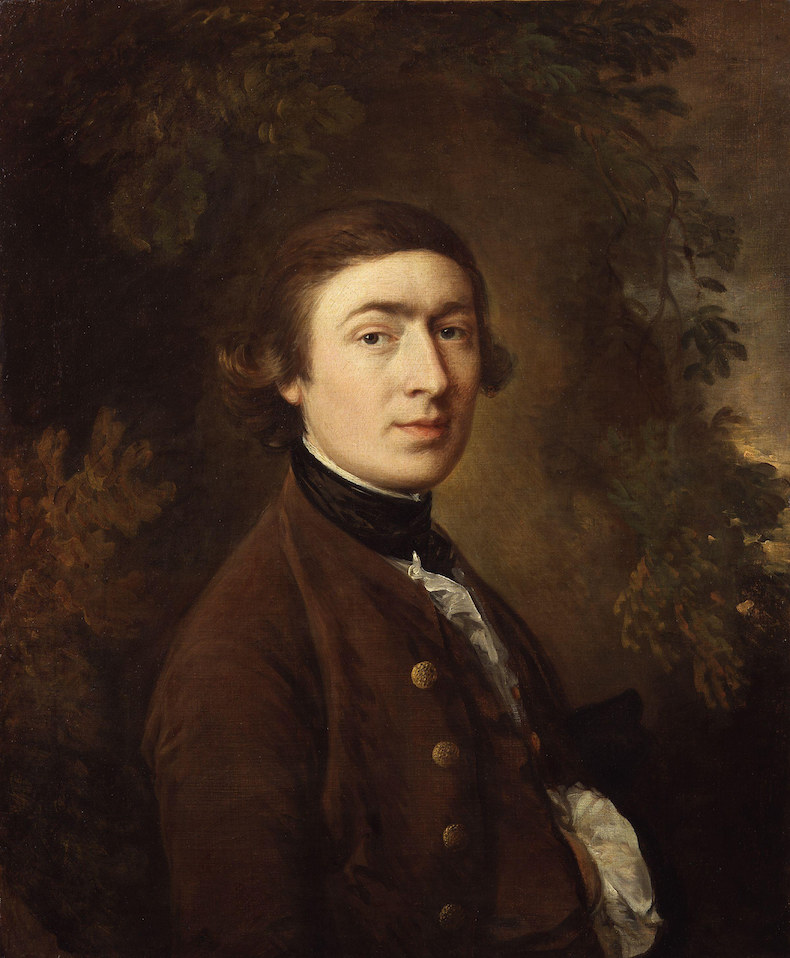
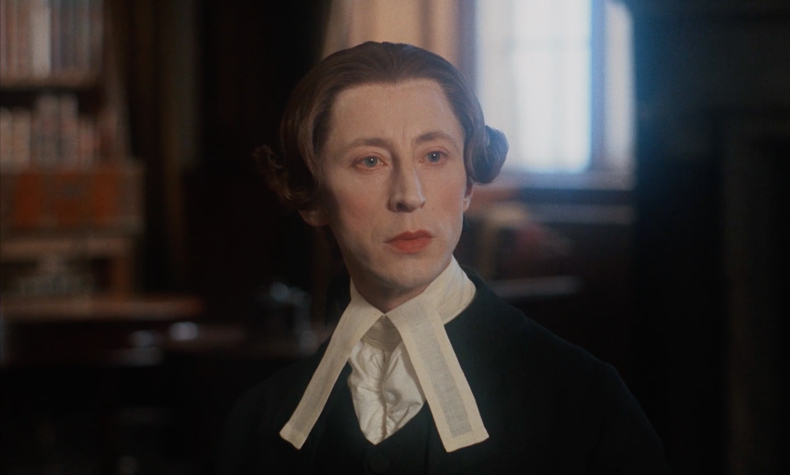
Meanwhile, the magnificence of Lady Lyndon’s hair seems inversely proportionate to her happiness. Her languid expression brings to mind Gainsborough’s painting of his youngest daughter, Margaret, holding a theorbo (c. 1777).
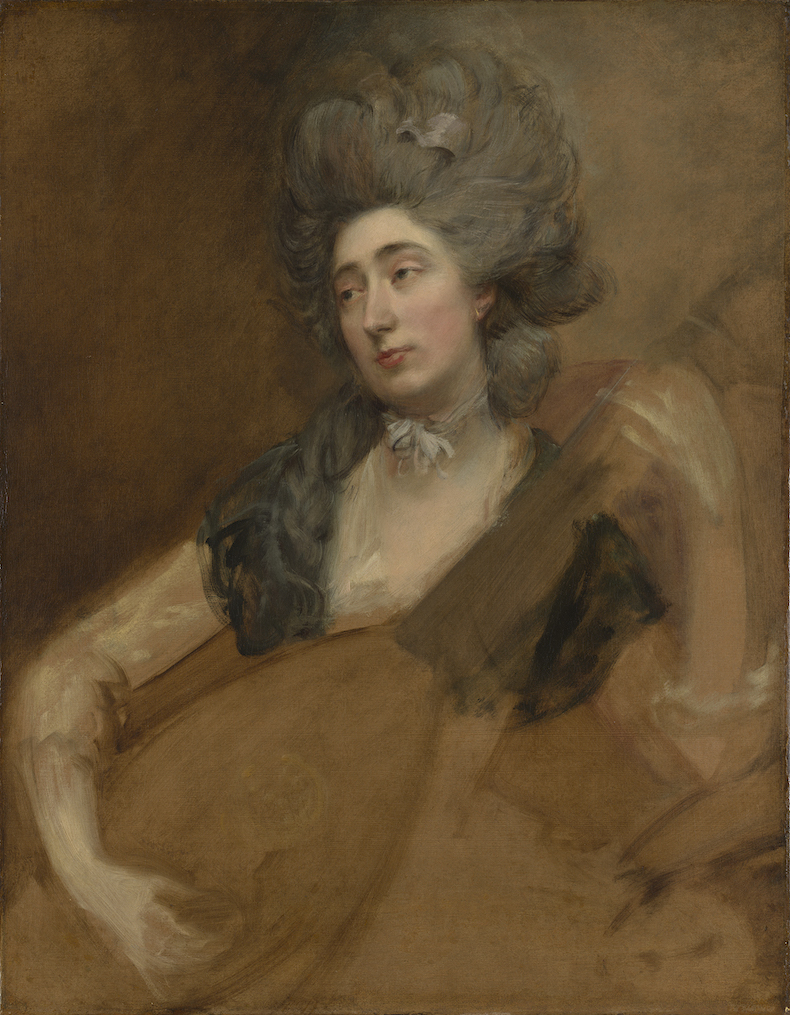
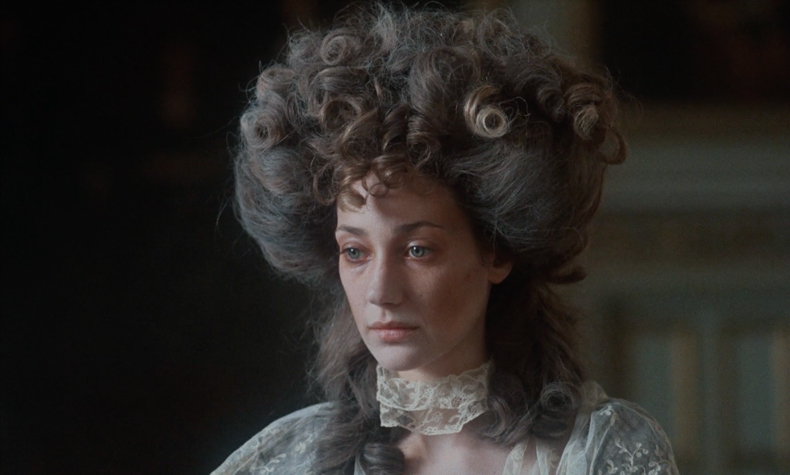
As useful as portraits were in informing Milena Canonero’s splendid costume design, the characters’ bearing – and Ken Adam’s production design – owe just as much to the 18th-century paintings known as conversation pieces, of which Hogarth, Johann Zoffany and Arthur Devis were acknowledged masters. Kubrick is criticised in some quarters for the stiffness of his characters, and nowhere are his characters less mobile than in Barry Lyndon, sometimes holding position for minutes at a time. But this is very much in the spirit of conversation pieces, in which artfully arranged people simply stand about, or engage in activities or conversation that never quite seem natural. Mario Praz’s description of Zoffany’s characters – ‘fixed forever in their essential poses, while the music which accompanied their antics continues to buzz in our ears’ – could just as well apply to Barry Lyndon, with its memorable use of Handel and Schubert. But the lack of naturalism was offset by an exacting approach to verisimilitude: as the art critic Christopher Hussey put it in an exhibition review in 1930, ‘The eighteenth-century artist was too sound a workman to put only three buttonholes on a coat with four buttons… the contemporary artist, tainted with the heresy of art for art’s sake, regards important things like that with lofty indifference.’ Kubrick and Adam would never.
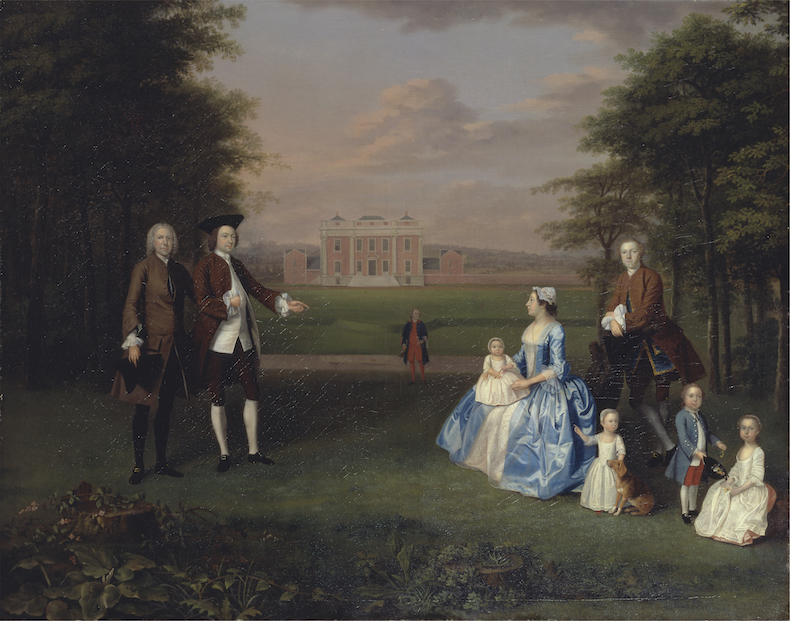
Besides The Adoration of the Magi, there is one other real painting that plays a quiet but pointed role in the film. It is Anthony van Dyck’s Philip Herbert, 4th Earl of Pembroke, with his Family (c. 1635). Like Cigoli’s work, it precedes Barry by more than a century – a reminder that ars longa, vita brevis, one of the film’s starkest messages. The largest painting Van Dyck ever made, at some five metres wide and more than three metres high, it makes the ‘Double Cube’ room of Wilton House – whose interiors provide many of those in the Lyndons’ principal home – seem even more imperious. It appears most prominently in a touching scene where Barry is reading to his son; the aristocratic Pembrokes, one of the richest families in England and here painted larger than life-size, seem subtly to mock this pretender to the gentry.
But even in the 1630s, the painting was projecting a power that in reality was on the verge of disintegrating. Charles, Lord Herbert, who stands in the painting with such poise and confidence, died of smallpox in his teens; his widow went on to marry the future Duke of Lennox and Richmond, a political rival of the Pembrokes. Robert Dormer, Earl of Carnarvon, a royalist, has a sword at his waist, but went on to be run through with one in the English Civil War. And Philip Herbert himself was fired as Lord Chamberlain by Charles I and wound up as an MP, stripped of his titles. The words on screen in Barry Lyndon’s epilogue apply just as much to the ten figures in Van Dyck’s painting as they do to the film’s characters, and will one day apply to all of us: ‘Good or bad, handsome or ugly, rich or poor, they are all equal now.’
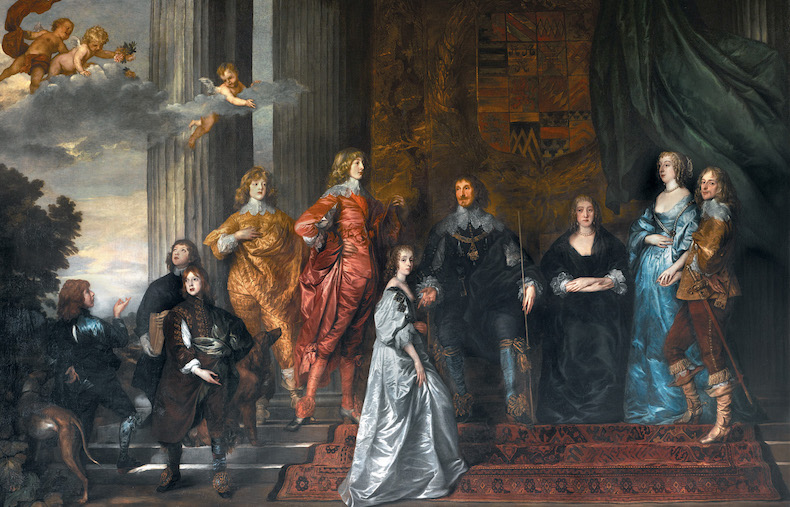
A 4K remaster of Barry Lyndon is currently in UK cinemas to mark the film’s 50th anniversary.
